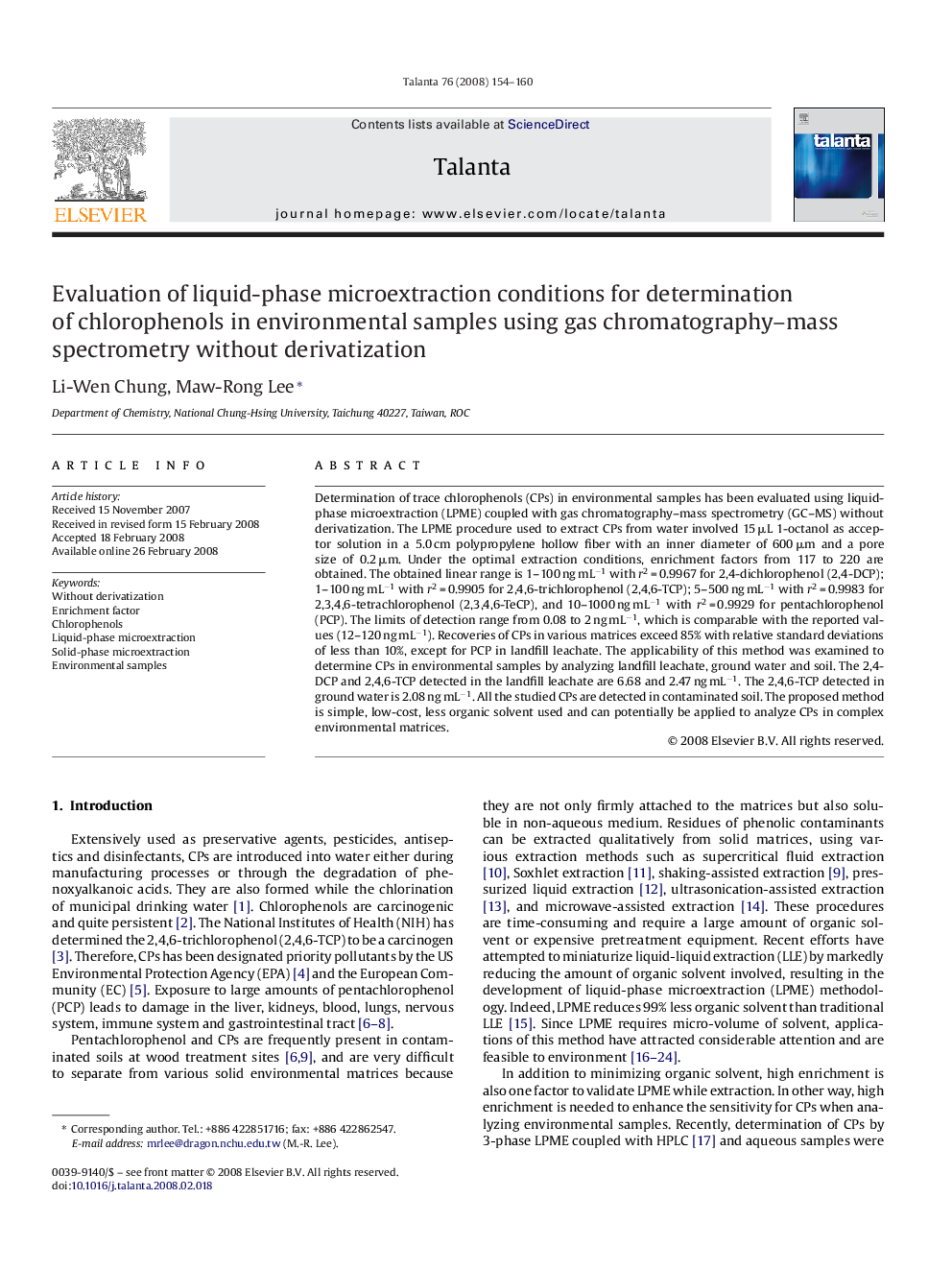| Article ID | Journal | Published Year | Pages | File Type |
|---|---|---|---|---|
| 1243977 | Talanta | 2008 | 7 Pages |
Determination of trace chlorophenols (CPs) in environmental samples has been evaluated using liquid-phase microextraction (LPME) coupled with gas chromatography–mass spectrometry (GC–MS) without derivatization. The LPME procedure used to extract CPs from water involved 15 μL 1-octanol as acceptor solution in a 5.0 cm polypropylene hollow fiber with an inner diameter of 600 μm and a pore size of 0.2 μm. Under the optimal extraction conditions, enrichment factors from 117 to 220 are obtained. The obtained linear range is 1–100 ng mL−1 with r2 = 0.9967 for 2,4-dichlorophenol (2,4-DCP); 1–100 ng mL−1 with r2 = 0.9905 for 2,4,6-trichlorophenol (2,4,6-TCP); 5–500 ng mL−1 with r2 = 0.9983 for 2,3,4,6-tetrachlorophenol (2,3,4,6-TeCP), and 10–1000 ng mL−1 with r2 = 0.9929 for pentachlorophenol (PCP). The limits of detection range from 0.08 to 2 ng mL−1, which is comparable with the reported values (12–120 ng mL−1). Recoveries of CPs in various matrices exceed 85% with relative standard deviations of less than 10%, except for PCP in landfill leachate. The applicability of this method was examined to determine CPs in environmental samples by analyzing landfill leachate, ground water and soil. The 2,4-DCP and 2,4,6-TCP detected in the landfill leachate are 6.68 and 2.47 ng mL−1. The 2,4,6-TCP detected in ground water is 2.08 ng mL−1. All the studied CPs are detected in contaminated soil. The proposed method is simple, low-cost, less organic solvent used and can potentially be applied to analyze CPs in complex environmental matrices.
